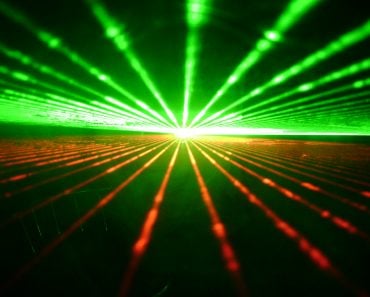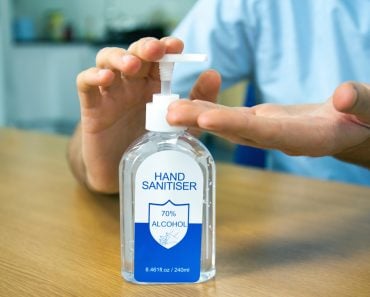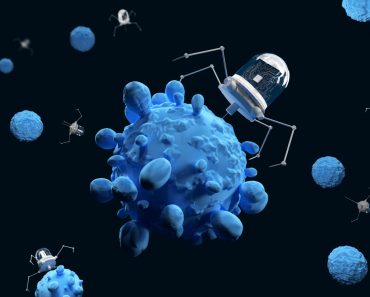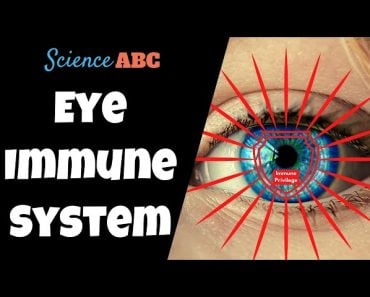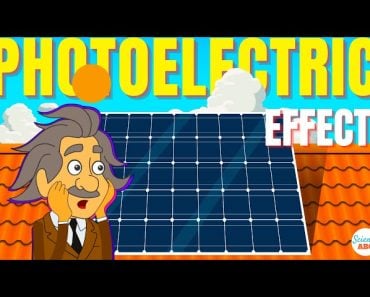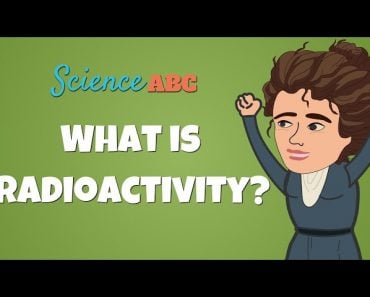Pulsed laser light is so powerful that when it scatters off the object it strikes, it induces powerful vibrations that can disrupt the object’s molecules and others nearby. This cutting-edge research is showing us news ways to help us kill pathogens.
Around 3 million people are infected with antibiotic-resistant microbes per year in the U.S. Such infections are much harder to treat and are growing more and more common. With antibiotics becoming less helpful, we need an alternative to help people fight against these hard-to-kill germs.
Scientists are looking for other ways to carry on the never-ending war with microorganisms. One of them could even be lasers!
That’s right! It could be possible to use lasers to shoot germs to death.
Recommended Video for you:
What Are Lasers?
First, did you know that the word ‘laser’ is actually an acronym? It stands for light amplification by stimulated emission of radiation – quite a mouthful. Saying laser is definitely easier!
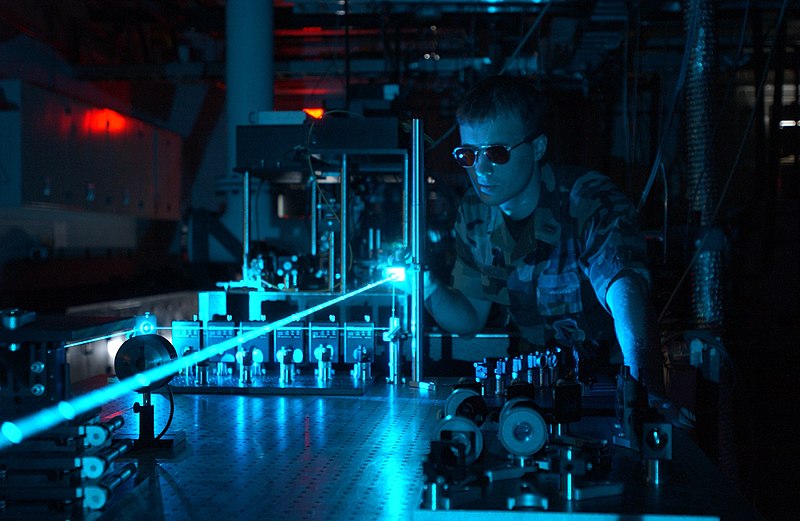
I’m no physicist, but I can give the basics on how lasers work. You just need to give atoms some energy, most commonly by shocking an object, like a crystal, with some electricity. These atoms try to stabilize themselves by removing the excess energy, which they do by emitting photons, simply known as light particles.
However, basic lasers continuously give off light so long as there is a power source exciting their atoms. That’s not helpful, at times, as we get a lot of unwanted heat from the laser that can heat the materials it touches. Lasers need to be modified so they don’t keep continuously giving off light.
Lasers can be modified by controlling the flow of electricity so that atoms are not continuously emitting light. That’s how we get different laser types, which shoot bursts of light at different time intervals. One such laser type that we’re interested in are ultra-short pulse lasers.
What Are Ultrashort Pulse Lasers?
Ultrashort pulse lasers are lasers that emit very powerful light in short bursts in extremely small time intervals, usually at the level of femtoseconds. A femtosecond is one quadrillionth of a second!
This modification made lasers more powerful and easier to control. Again, I’m no physicist, so maybe this video will help you better understand both normal and pulse lasers.
The gist is that ultrashort pulse lasers give out really powerful bursts of light. It’s because of this power that we can use these lasers to kill germs, or rather, inactivate them.
One recent study showed that these lasers could kill 99.9% of antibiotic-resistant bacteria, bacterial spores and inactivated viruses.
How Do Ultrashort Pulse Lasers Kill Germs?
Light particles travel at certain frequencies. Once these particles hit an object, they are deflected off or scattered, thus changing the frequency.
It’s like throwing a crazy ball really hard in a small room. It will bounce off everything and scatter across the whole space.
When these pulsed light particles hit an object, it scatters, a phenomenon known as Raman scattering. The laser’s energy is bouncing off every object it hits.
This is where the laser’s power comes into play. This pulsed laser light is so powerful that when it scatters off the object it strikes, it induces powerful vibrations that can disrupt the object’s molecules and other molecules nearby.
The vibration is strong enough to break molecular bonds in biomolecules, such as proteins and DNA. So, if I were to shoot some bacteria with this laser, it would essentially break down its proteins at a molecular level.
Similar to how a tuning fork vibrates when you strike it, the protein molecules vibrate after being struck by the laser. However, proteins weren’t meant to vibrate unnaturally, so they break apart.
The laser can also be used to inactivate viruses. We can shoot the laser at the virus particles and the laser’s electromagnetic energy will polarize or charge the viral molecules, just like their proteins. This energy causes the proteins to undergo Raman-active vibrations. As a result, the hydrogen bonds that hold these biomolecules together will break apart, which leads to protein structural damage.
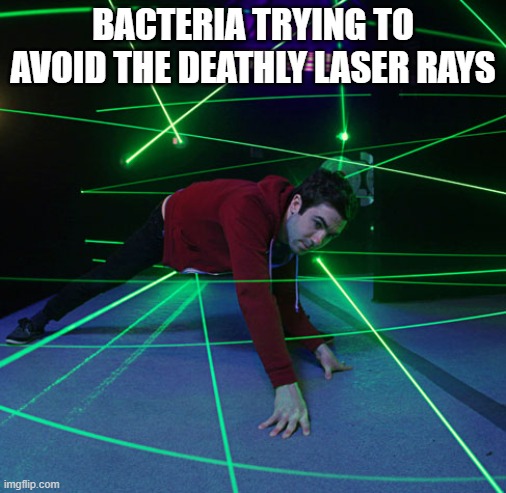
Such lasers would have so many benefits. For example, after a deep cut, you could shine the ultra-short pulse laser on the wound to kill any bacteria around it, thus preventing an infection.
Won’t The Laser Also Kill Human Cells?
The secret to this fair question lies in the laser’s power. There is a particular therapeutic window of laser power that is safe to use without damaging our cells. That range is 1-10 GW/cm2.
Human cells are not like bacterial cells or viral particles. They are larger, more complex and densely packed with all their organelles.
If we were to use the ultrashort pulse lasers at a higher power, it would be harmful to our cells. Viruses requires the least power for inactivation, due to their incredibly tiny size. If we were to use a little more power, the laser would also kill bacterial cells. If we continue to increase the power even more, then human or mammalian cells could start to be affected.
How Else Can These Lasers Be Used?
The microorganism-killing ability these lasers have offers various uses. Apart from just shooting wounds to disinfect the area, we could also disinfect other material surfaces, make vaccines, and treat blood infections. For example, hospital equipment like surgical apparatus could be made sterile by shooting them with these lasers.
These lasers even help in vaccine manufacturing, as they offer an easier way to inactivate viruses or bacteria. Usually, we inactivate viruses using chemicals like formaldehyde, but using a laser would be much more time-efficient and make it possible to produce chemical-free vaccines.
Theoretically, using lasers to kill blood-borne germs is also possible. For example, let’s say an unknowing HIV positive person donates blood. Whoever would receive this blood won’t know that it has HIV particles, which could pose a risk. However, passing the blood through these lasers would inactivate the virus particles, making the blood safe to use.
The future sure looks bright with these lasers in hand!
A Final Word
This laser technology has been around for a few decades, but we have not yet begun applying it for practical purposes. However, the potential uses for it are sterilizing blood products or pharmaceuticals and making chemical-free inactivated vaccines.
Currently, UV or other radiation forms are applied to sterilize blood products and pharmaceuticals. However, there is always a risk of damage to the blood as well. UV rays can’t selectively kill cells, unlike ultrashort pulse lasers. Radiation is a great tool to sterilize non-living objects, but it isn’t safe to use on people or biological products.
Researchers are carrying out studies to test how effectively these lasers can kill bacteria, fungi, their spores and viruses in different environments. If they are found to be effective, they could even be used in the food industry to inhibit microbial growth and improve food shelf life.
A few tweaks still need to be figured out, such as the optimum power level and exposure duration. In a few years’ time, we can hope to see this technology implemented in our lives.
With antibiotic resistance rising, making some drugs nearly useless, we needed physical methods to fight the microorganisms. It’s not like germs can develop laser resistance, as there aren’t known natural biological processes that can be used to defend against lasers.
Although, with regards to vaccine manufacturing, more research is needed to see how effective they will be. We would need to see in detail how good laser inactivated viruses would be at eliciting immune responses.
For now, these microbial death rays give us an environmentally friendly, chemical-free and non-invasive way to selectively kill microbes!
References (click to expand)
- Tsen, S.-W. D., Wu, T., Kiang, J. G., & Tsen, K.-T. (2012). Prospects for a novel ultrashort pulsed laser technology for pathogen inactivation. Journal of Biomedical Science. Springer Science and Business Media LLC.
- Ultrashort-pulse lasers kill bacterial superbugs, spores. Washington University School of Medicine
- Tsen, S. D., Popovich, J., Hodges, M., Haydel, S. E., Tsen, K., Sudlow, G., … Achilefu, S. (2021, December 8). Inactivation of multidrug‐resistant bacteria and bacterial spores and generation of high‐potency bacterial vaccines using ultrashort pulsed lasers. Journal of Biophotonics. Wiley.
- Tsen, S.-W. D., Kingsley, D. H., Kibler, K., Jacobs, B., Sizemore, S., Vaiana, S. M., … Achilefu, S. (2014, November 5). Pathogen Reduction in Human Plasma Using an Ultrashort Pulsed Laser. (J. Spencer, Ed.), PLoS ONE. Public Library of Science (PLoS).
- Kryukov, P. G. (2001, February 28). Ultrashort-pulse lasers. Quantum Electronics. IOP Publishing.


